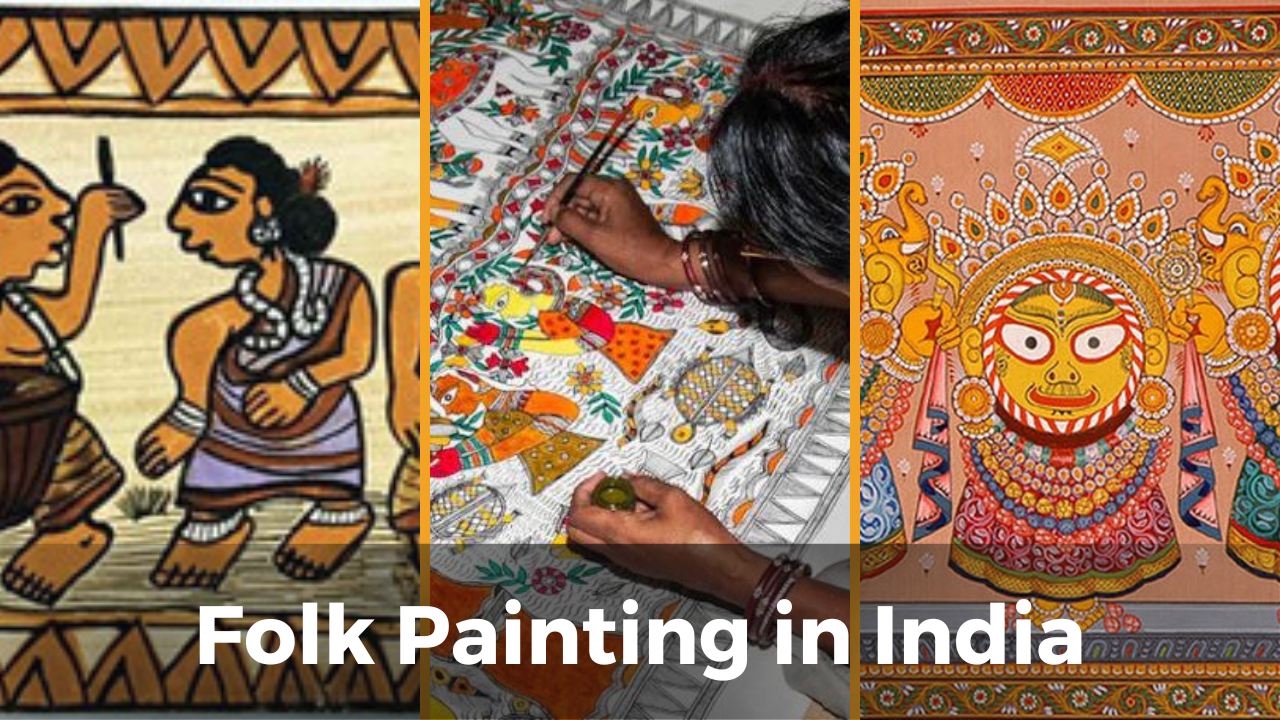Folk Paintings in India
Madhubani Paintings
- Traditionally done by the women of villages around Madhubani town (Bihar)
- Also called Mithila Paintings
- Common themes usually drawn from Hindu religious motifs
- Includes depictions of Krishna, Rama, Durga, Lakshmi, and Shiv




